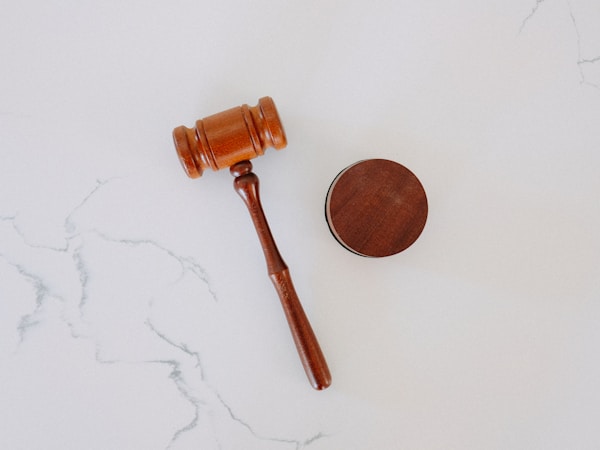Pursuant to its constitution, California has essentially three major parts to every legislative session: house of origin, second house, and final month and gubernatorial action.
PART ONE OF THE LEGISLATIVE SESSION: JANUARY 3–MAY 27
The first year begins with legislators awaiting their committee assignments, considering proposals for authoring bills, and, for new members, attending “meet-and-greet” appointments in which they meet their colleagues, constituents and lobbyists. This usually occurs in January and most of February.
During the first part of the second year of a two-year session, legislators must deal with “two-year bills,” those measures that remain from the prior year that must pass their house of origin by January 31. They are also introducing new bills prior to the late February deadline.
By March, the budget subcommittees and policy committees begin hearing bills and budget proposals. After policy committees hear and vote on bills, the vast majority of measures are considered by the Appropriations Committee. Once bills pass the Appropriations Committee, they head to the floor for final consideration in their house of origin.
The California legislature must convene its regular session at noon on the first Monday in December of every even-numbered year and they must undertake their organization that day (e.g., election of officers) (Article IV, Section 3).
The constitutional officers take office on the Monday after January 1 following their election.
The governor must report to the legislature each year on the condition of the state. This is called the “State of the State” address. The governor may, but is not required to, make recommendations to the legislature at that time (Article V, Section 3).
Within the first 10 days of each year, the governor must submit to the legislature a budget for the forthcoming fiscal year (which begins July 1). This is why the governor’s first budget proposal is called the governor’s “January 10 budget.” The budget must include an explanatory message, as well as itemized statements for expenditures and estimated revenues. The governor may require a state agency or employee to furnish whatever information he or she deems necessary to prepare the budget. The budget bill must be introduced immediately in each house by the budget committee chairs of the senate and assembly. The legislature must pass the budget by midnight on June 15 (Article V, Section 12).
The budget submitted by the governor to the legislature within the first 10 days of each session must contain a statement of accounts payable for the prior fiscal year and for the current fiscal year, as well as the succeeding fiscal year (Government Code Section 12020).
The budget submitted by the governor to the legislature within the first 10 days of each session must contain a statement of cash flow for the prior fiscal year and for the current fiscal year, as well as the succeeding fiscal year (Government Code Section 12021).
When each regular session convenes, the president pro tempore of the senate, the speaker of the assembly, and the two minority leaders must report to their houses the goals and objectives of that house during that session (Article V, Section 22).
No bill other than the budget bill may be heard or acted upon by a committee or either house until it has been in print for 30 days after introduction. Either house can dispense with this rule by a three-quarters majority vote of that house. A bill cannot be passed unless it has been read by its title on three days in each house. But this rule can also be dispensed with by a two-thirds majority vote of the house’s members (Article IV, Section 8).

PART TWO OF THE LEGISLATIVE SESSION: MAY 31–JULY 4
Immediately after the house of origin deadline, budget deliberations are in full swing and bills must quickly be considered in the second house. The first half of June is spent mainly on adoption of the budget bill as well as about two dozen trailer bills, which often implement significant statutory changes as part of the adoption of the state budget.
For the month that follows, the policy committees in both houses work diligently to consider and vote on the hundreds of bills that have made their way over from the other house. This is followed by a month-long summer recess before the final two months of the session.
All meetings of a house of the legislature or a committee must be open and public, and all persons must be permitted to attend the meetings (Government Code Section 9027). Any meeting that is required to be open and public must be held only after full and timely notice to the public as provided by the Joint Rules of the Assembly and Senate (Government Code Section 9028).
The governor may reduce or eliminate one or more items of appropriation while approving other portions of a bill. In such a case, the governor must include a statement of the items reduced or eliminated with the reasons for his or her action. Any appropriation item reduced or eliminated must be considered separately and can be passed over the governor’s objections by a two-thirds majority vote (Article IV, Section 10).
Until the budget bill is enacted, the legislature cannot send any bills to the governor that propose to appropriate funds during the upcoming fiscal year unless it is an emergency bill recommended by the governor. No bill, except the budget bill, may contain more than one item of appropriation (Article IV, Section 12).
All appropriations bills require a two-thirds majority vote, except the budget bill, budget trailer bills with appropriations, and those for public school appropriations (all of which require a simple majority vote). The legislature can control the submission, approval, and enforcement of budgets and the filing of claims for all state agencies. Legislators shall not be paid any salary of expenses if any year in which the budget bill is not passed by the legislature by midnight on June 5 (Article IV, Section 12).

PART THREE OF THE LEGISLATIVE SESSION: AUGUST 1–NOVEMBER 30
The final weeks of the legislative Session are a proverbial sprint to the finish line. Policy committees have finished the bulk of their work, but many bills get significant amendments that require the policy committees to hear additional bills as the session winds down. The main focus is now on the fiscal committees and their votes on measures that are pending on the suspense files in the respective Appropriations Committees of the senate and assembly.
The last two weeks of the session are a whirlwind as hundreds of bills are considered on the floor of the second house, with most bills having to return for a final vote on the floor of the bill’s house of origin. Once the session adjourns, the work is not done. Instead, the focus turns to the governor’s office and his or her consideration of on average 1,000 bills over the course of 30 days.
A bill cannot be passed or become a statute unless that bill and any amendments have been in print and published on the Internet for at least 72 hours before the vote, unless the governor has submitted a statement that the bill is needed to address a state of emergency. No bill may be passed unless a majority of members of each house votes in favor of the bill (Article IV, Section 8).
Each bill passed by the legislature must be presented to the governor. The bill becomes a statute if it is signed by the governor—or the governor may veto a bill if he or she returns it to the house of origin along with any objections. If the legislature votes again to pass the bill by a two-thirds majority vote, then the bill becomes a statute (Article IV, Section 10).
Any bill in the possession of the governor after adjournment of the legislature that is not returned within 30 days becomes a statute. Any other bill presented to the governor (i.e., prior to the end of session) becomes a statute if it is not returned within 12 days. Any bill that was introduced in the first year of the two-year session that has not been passed by its house of origin by January 31 of the second year may no longer be acted upon by either house (Article IV, Section 10).
At the close of each regular session, the president pro tempore of the senate, the speaker of the assembly and the two minority leaders must report on the progress made toward meeting the goals and objectives outlined at the beginning of the legislative session (Article IV, Section 22).
At each session, the governor must report to the legislature any reprieves, pardons, or commutations granted, including the reasons for doing so (Government Code Section 12017).
Chris Micheli serves as an Advisor to Abstract. He is an attorney and registered lobbyist with the Sacramento governmental relations firm of Aprea & Micheli, Inc. He also is an Adjunct Professor at McGeorge School of Law at the University of the Pacific in their Capital Lawyering Program.














































